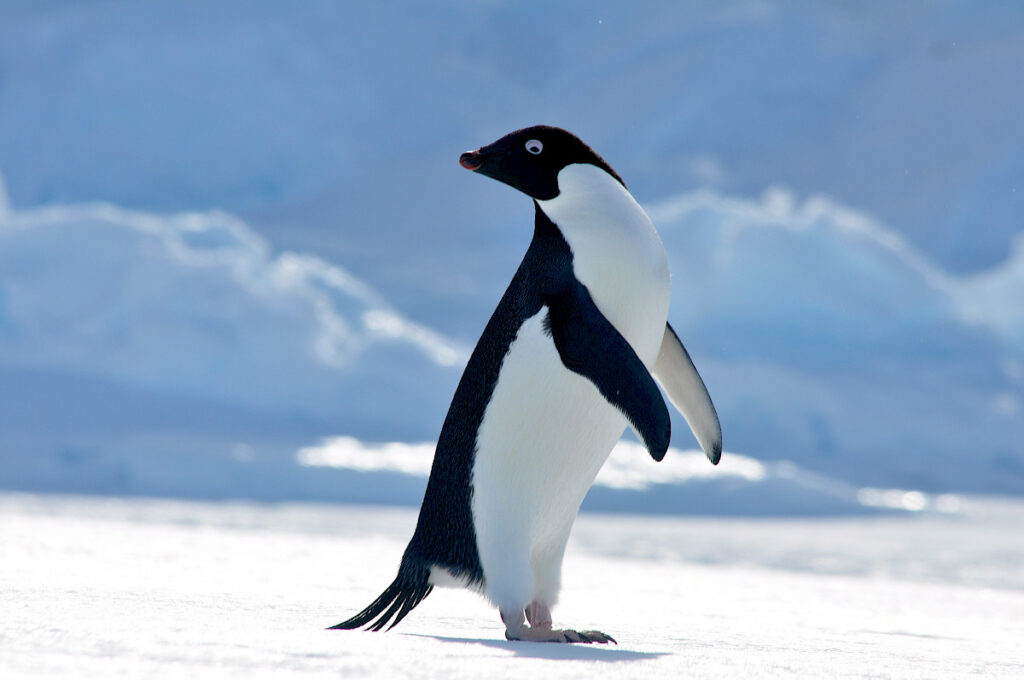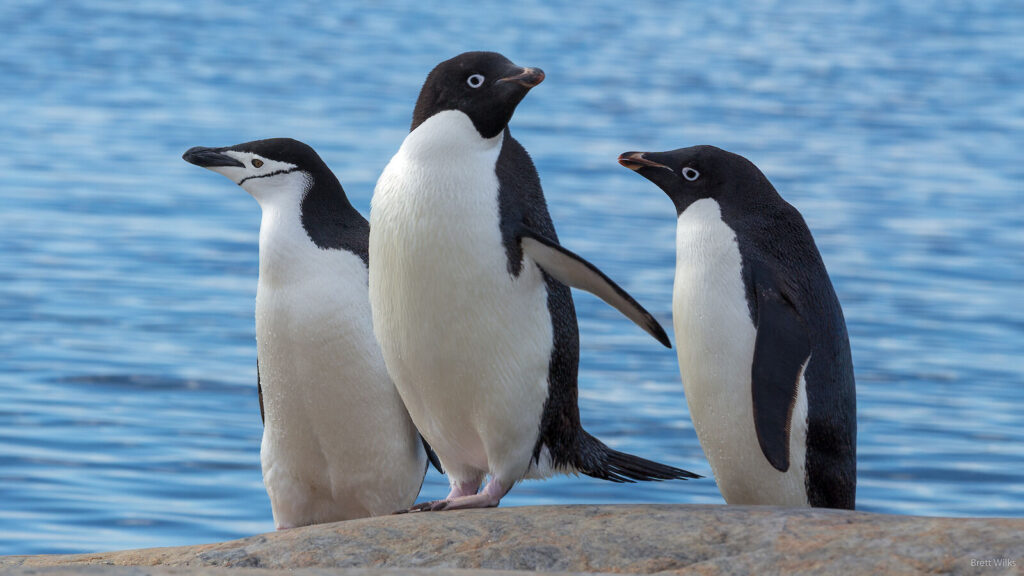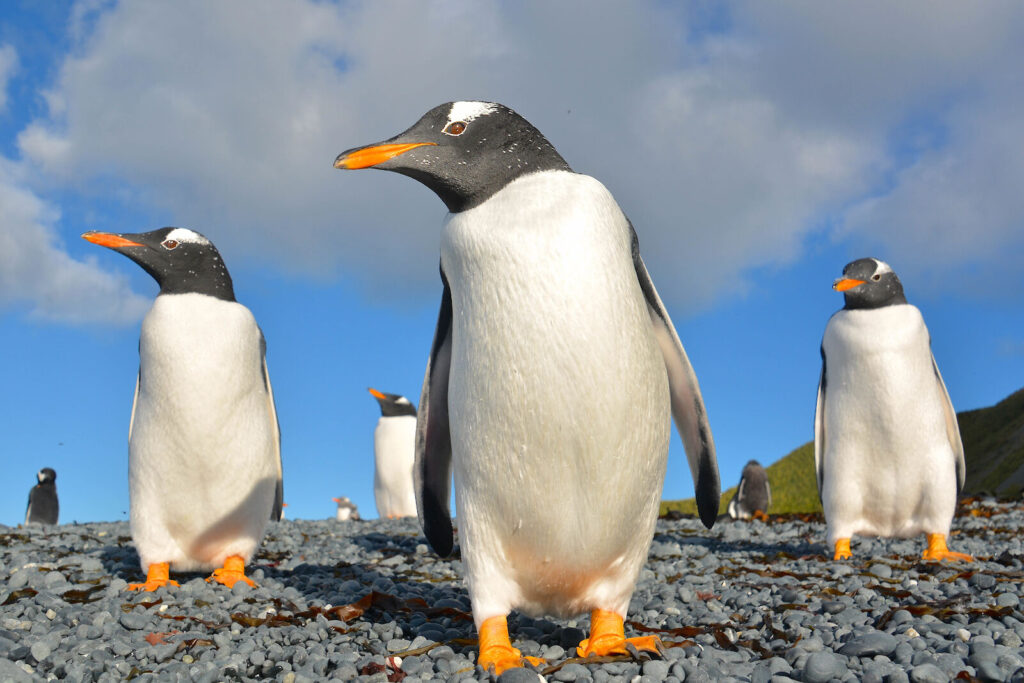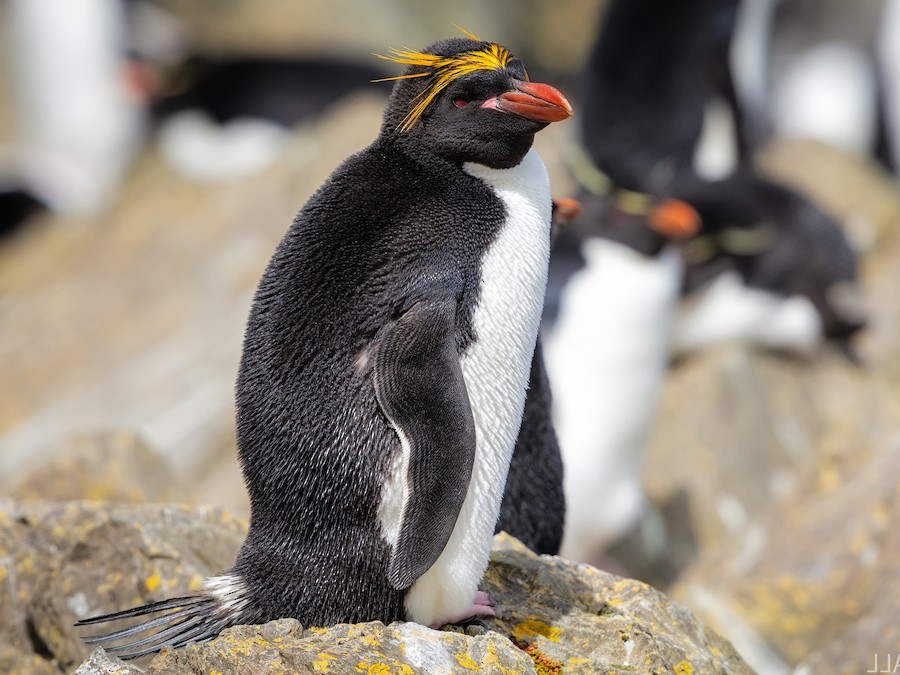Antarctica is a frozen land of extremes, where vast icy landscapes meet the unrelenting chill of the Southern Ocean. But within this stark, awe-inspiring environment lives one of nature’s most charming and resilient creatures—penguins. For wildlife enthusiasts, a trip to the southernmost continent offers a once-in-a-lifetime chance to see these flightless wonders in their natural habitat.
This article dives into the lives of the five penguin species you’ll find in Antarctica, examining their unique traits, behaviors, and the challenges they face. By the end, you’ll understand what makes these penguins so remarkable and why they deserve our protection.
Emperor Penguin

Known as the largest and most regal of all penguins, the emperor penguin commands the icy terrain like no other.
Description
Standing up to 45 inches tall and weighing around 70-90 pounds, emperor penguins are striking with their black heads, deep orange-yellow necks, and pale bellies. They thrive in the harshest Antarctic climates, where temperatures can plummet to -60°F.
Behavior
The breeding rituals of emperor penguins are a testament to their resilience. Mating begins during the unforgiving Antarctic winter, with females laying a single egg that the males incubate for about 65 days. During this time, males endure subzero blizzards while fasting, all for the survival of their offspring.
Conservation Status
Currently classified as near threatened, emperor penguins face threats from melting sea ice caused by climate change, which reduces their breeding grounds.
Adelie Penguin

Energetic and full of personality, the Adelie penguin is a fascinating species to spot on the icy coasts of the southern continent.
Description
Adelie penguins are smaller than emperors, standing about 18-24 inches tall and weighing 8-13 pounds. Recognizable by their white eye rings and tuxedo-like black-and-white coats, they inhabit ice-covered coastal regions.
Behavior
Adelie penguins are highly social, often forming massive breeding colonies. During mating, the males build nests from stones to woo potential partners, a display of both dedication and ingenuity. Their diet consists mainly of krill and small fish.
Conservation Status
Although their populations are robust for now, Adelie penguins face long-term threats from diminishing sea ice, a critical habitat for finding food.
Chinstrap Penguin

Playful and highly recognizable, the chinstrap penguin gets its name from the thin black line that runs under its chin, resembling a helmet strap.
Description
These medium-sized penguins stand about 27 inches tall and weigh around 9-14 pounds. They are commonly found on rocky Antarctic islands and are known for their white faces contrasting sharply with black backs.
Behavior
Chinstrap penguins are vocal and notoriously feisty. Their colonies reverberate with loud calls as they protect their territories and nests. They mainly feed on krill and other small crustaceans.
Conservation Status
Despite being numerous, chinstrap penguins are experiencing population declines in some areas due to food scarcity driven by warming waters and overfishing.
Gentoo Penguin

The gentoo penguin is famous for its distinctive orange beak and the comical waddling gait that has endeared them to birdwatchers around the globe.
Description
Standing roughly 30-35 inches tall, gentoo penguins are among the fastest underwater swimmers, capable of reaching speeds up to 22 mph. They inhabit ice-free areas near the Antarctic Peninsula.
Behavior
Gentoos are known for their strong pair bonds, often mating with the same partner every breeding season. They are versatile feeders and consume krill, squid, and fish.
Conservation Status
While classified as near threatened, gentoos are relatively adaptable. However, they remain vulnerable to habitat loss and human activities, such as Antarctic tourism.
Macaroni Penguin

With an unmistakable flair, the macaroni penguin is one of the most flamboyant members of the penguin family, sporting bright yellow-orange crests above its eyes.
Description
Macaroni penguins average about 28 inches in height and weigh around 11-13 pounds. They prefer rocky, volcanic islands scattered throughout sub-Antarctic regions but are also seen near the Antarctic Peninsula.
Behavior
Macaronis form some of the largest colonies among penguins, with upwards of 100,000 individuals gathering on a single nesting site. They rely heavily on crustaceans and are particularly fond of krill.
Conservation Status
Listed as vulnerable, macaroni penguins are under pressure from climate change, overfishing, and pollution in their feeding grounds.
Comparing Antarctic Penguin Species
To help you understand the differences between the five species, here’s a quick comparison table highlighting some key traits:
| Species | Height | Weight | Diet | Key Habitat | Conservation Status |
|---|---|---|---|---|---|
| Emperor Penguin | Up to 45 in | 70-90 lbs | Fish, krill | Antarctic ice shelves | Near Threatened |
| Adelie Penguin | 18-24 in | 8-13 lbs | Krill, fish | Coastal Antarctica | Least Concern |
| Chinstrap Penguin | 27 in | 9-14 lbs | Krill, shrimp | Antarctic islands | Least Concern |
| Gentoo Penguin | 30-35 in | 11-19 lbs | Krill, squid | Ice-free Antarctic areas | Near Threatened |
| Macaroni Penguin | 28 in | 11-13 lbs | Krill, crustaceans | Sub-Antarctic islands | Vulnerable |
Threats to Penguin Populations
Penguins are facing an uncertain future due to several factors:
- Climate Change: Rising temperatures cause sea ice to melt, reducing vital feeding and breeding grounds.
- Overfishing: The depletion of krill and fish stocks threatens their primary food sources.
- Pollution: Plastic waste and oil spills contaminate their habitats, affecting their health and survival.
Efforts to Protect Penguins
Thankfully, global efforts are underway to protect these iconic birds:
- International Treaties: Initiatives like the Antarctic Treaty help safeguard delicate ecosystems.
- Research: Conservationists actively monitor populations to better understand and address threats.
- Public Support: Individuals can contribute by supporting penguin conservation organizations and reducing their environmental footprint.
People Also Ask
What do penguins eat in Antarctica?
Antarctic penguins mainly eat krill, fish, and squid, which are abundant in the Southern Ocean.
Where is the best place to see penguins?
Antarctica is the ultimate destination to see penguins in their natural habitat. Popular spots include the Antarctic Peninsula and South Georgia Island.
Are penguins endangered?
Some species, like the macaroni penguin, are listed as vulnerable. Other Antarctic penguin species face threats and are closely monitored to prevent population declines.
Help Protect Antarctic Wildlife
Antarctica’s penguins embody resilience and charm in equal measure. However, their existence is closely tied to a fragile ecosystem that needs our support. By understanding their lives and the challenges they face, you can play a part in safeguarding their future.
If you’re as fascinated by these incredible birds as we are, consider supporting penguin conservation efforts or planning an eco-friendly trip to experience these animals in their frozen paradise.


